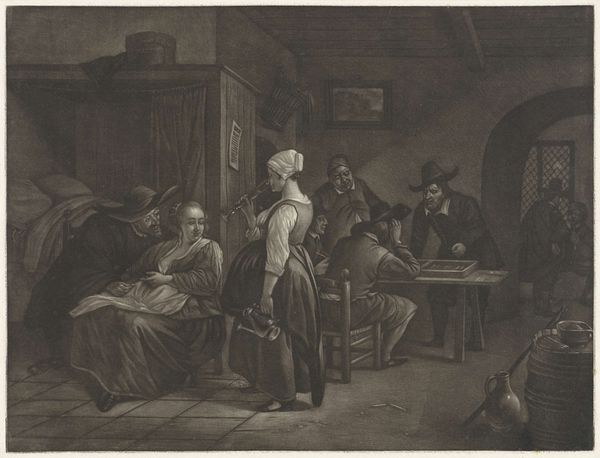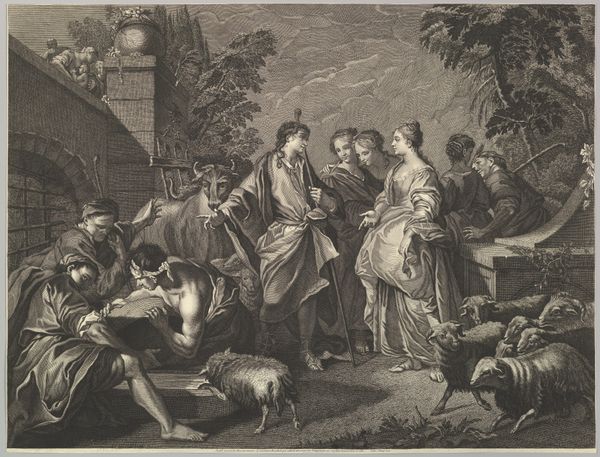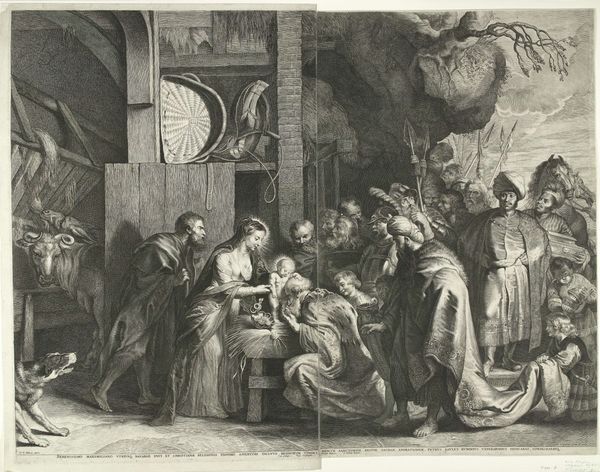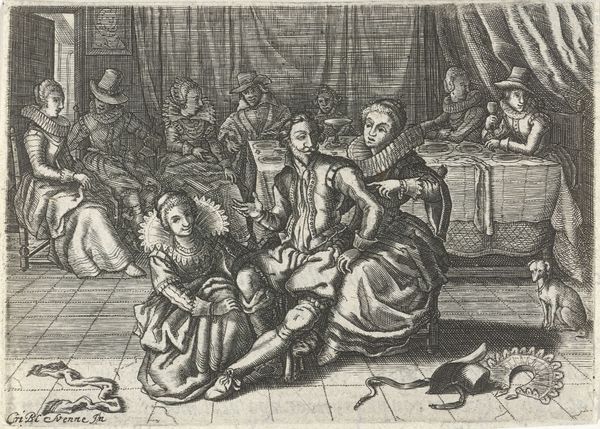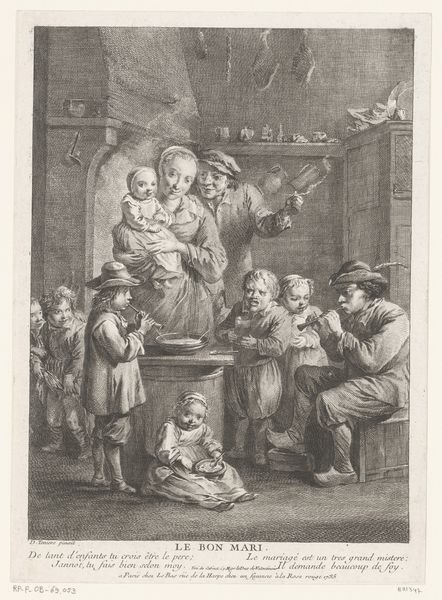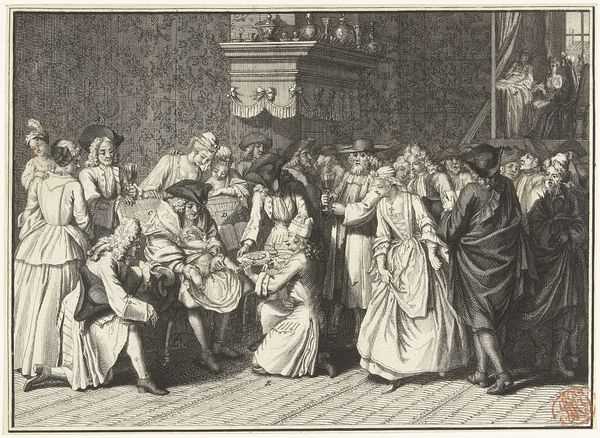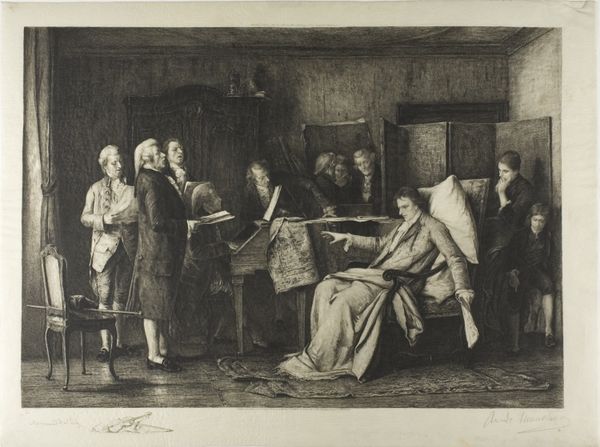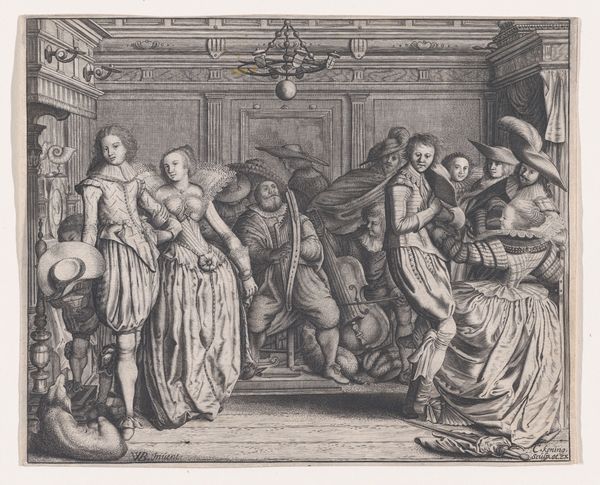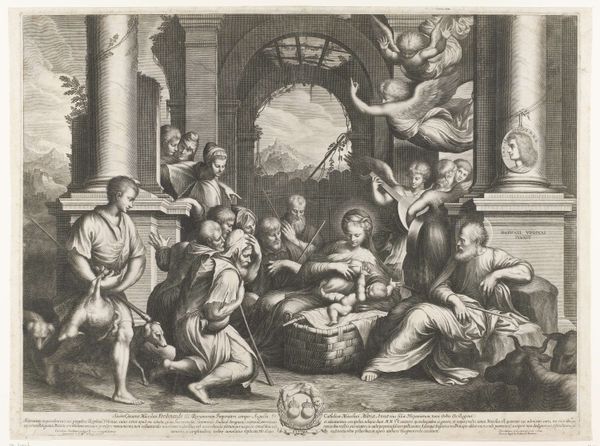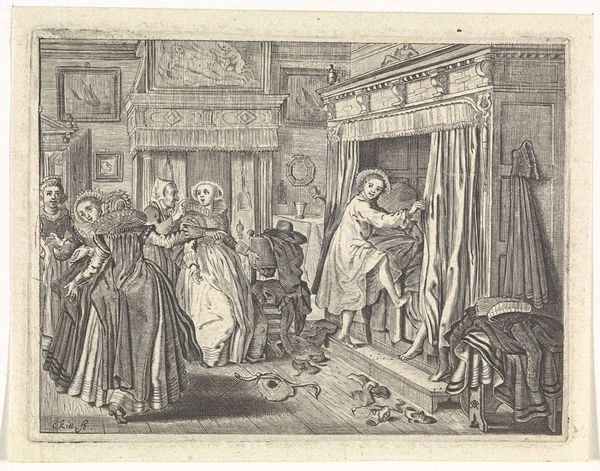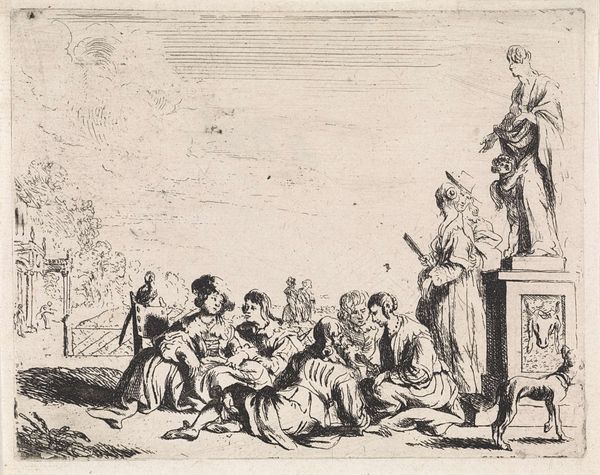
painting, oil-paint
#
portrait
#
baroque
#
painting
#
oil-paint
#
oil painting
#
group-portraits
#
genre-painting
#
portrait art
#
fine art portrait
Dimensions: height 49 cm, width 64.5 cm
Copyright: Rijks Museum: Open Domain
Richard Brakenburg painted “The Feast of St. Nicholas” in the 17th century, capturing a scene teeming with life and symbolic gestures. At first glance, the central motif is the communal celebration. But look closer at the children: some cry, some laugh, some are rewarded, and others are being punished. This duality has its roots in ancient rituals. Think of the Roman Saturnalia, where chaos and order, reward and punishment, were two sides of the same coin. Consider the figure of St. Nicholas himself, or his stand-in. His role as a bringer of gifts is a more recent, comforting iteration. But the tradition is far older. In pre-Christian traditions, figures of gift-giving deities were also arbiters of fate, deciding on bounty or hardship. The painting captures this subconscious tension, a powerful force that connects us to ancestral memories. Even today, the archetype of the gift-bringer resonates with the same depth of emotional complexity. Though the forms change, the echoes remain.
Comments
No comments
Be the first to comment and join the conversation on the ultimate creative platform.
